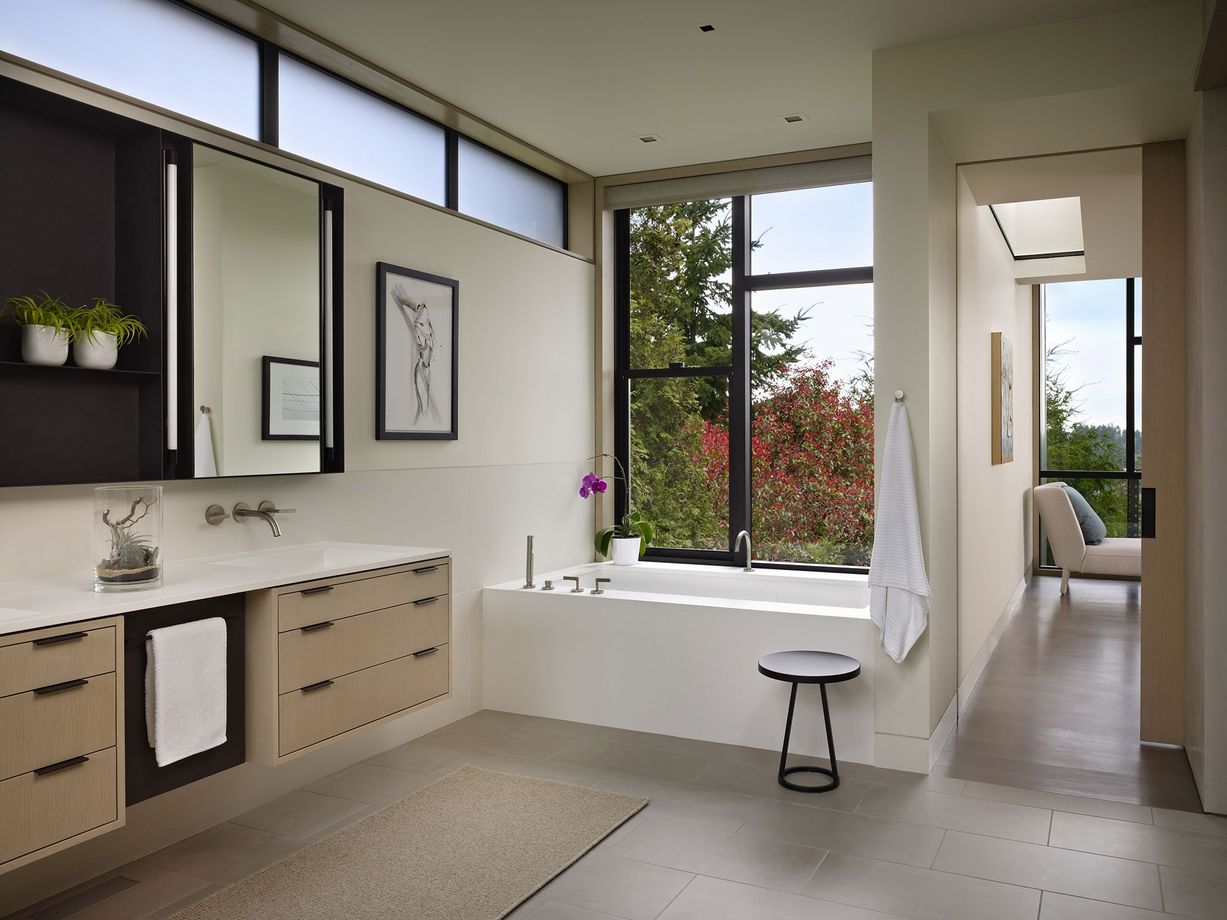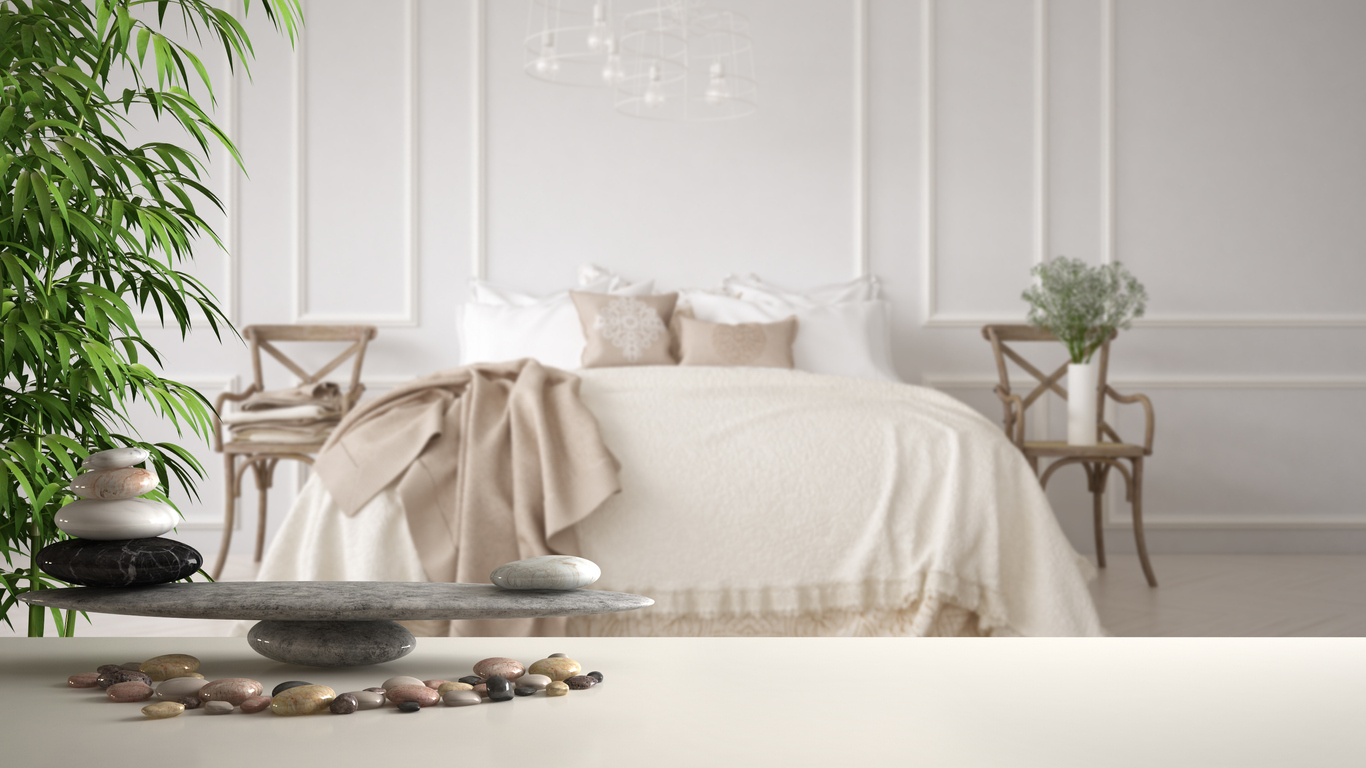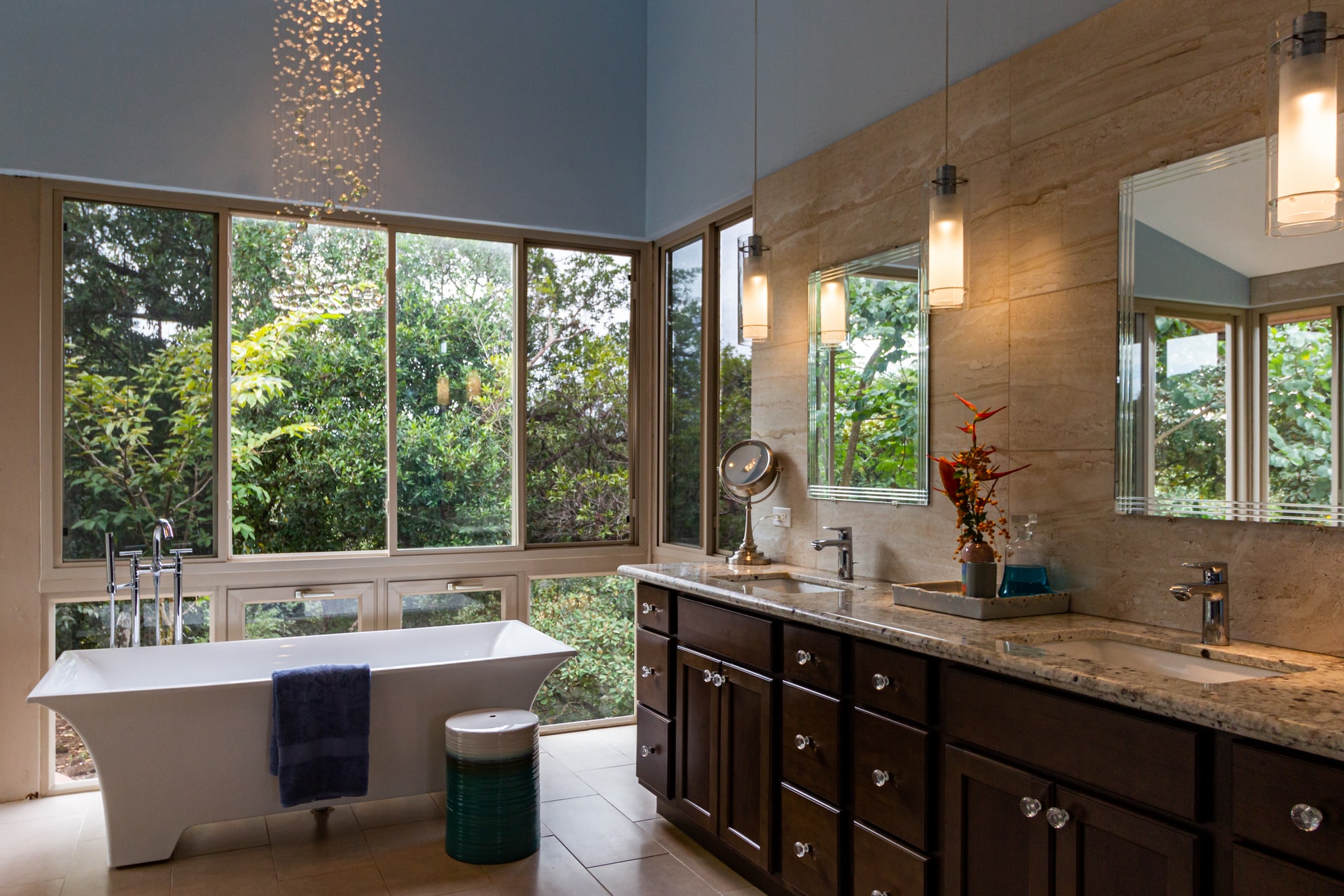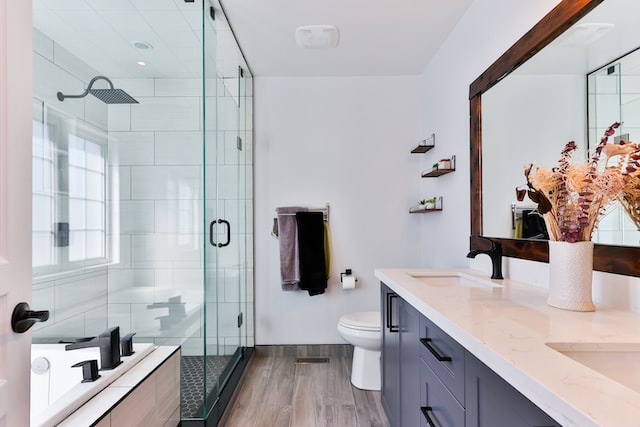Thinking of remodeling your bathroom? Bathroom remodels and upgrades are by far one of the most desirable remodeling projects, and for good reason. Our bathrooms are places of retreat and relaxation, and it’s difficult to do either of these things when you’re focused on leaky faucets, mold issues, outdated fixtures, or too small of a room. According to Houzz, bathroom models are among the most popular home remodeling projects. Before you hire a bathroom remodeling contractor, be sure you understand these facts and information about remodeling, and see if your home is keeping up with the trends.
How to get started
Make sure to have a plan ready before starting your bathroom remodeling. Include important information such as your budget, needs, and goals. Take a moment to reflect on the reasons behind the remodel. Whether it’s to address functionality issues, enhance aesthetics, or achieve a specific ambiance, clarifying your objectives is the first step.
Then, conduct an evaluation of your bathroom’s current state. Examine the existing fixtures, flooring, and walls. Identify any structural concerns, plumbing issues, or outdated features needing attention. This provides a clear understanding of the scope of the project and serves as a foundation for planning the necessary changes. Think about how the space can be optimized for your daily routines while also reflecting your desired design aesthetics. Look for bathroom design inspirations to gather ideas for styles, colors, and layouts that align with your vision.
Research professionals, such as contractors and plumbers, to determine the expertise needed for your project. Gathering recommendations and exploring local showrooms can provide insights into available fixtures and materials. Sketching a rough layout of your ideal bathroom and collecting samples will create practical references for your remodel.
Budgeting for your bathroom remodel
Small bathroom remodeling costs
For some homeowners, a bathroom remodel may be on a smaller scale, like updating major fixtures and surfaces. Remodeling Magazine defines a midrange bathroom remodel in the following manner: “Update an existing 5-by-7-foot bathroom. Replace all fixtures to include 30-by-60-inch porcelain-on-steel tub with 4-by-4-inch ceramic tile surround; new single-lever temperature and pressure-balanced shower control; standard white toilet; solid-surface vanity counter with integral sink; recessed medicine cabinet with light; ceramic tile floor; vinyl wallpaper.”
- Average midrange bathroom remodeling job cost in 2023: $24,606
- Average midrange bathroom remodeling resale value in 2023: $16,413
- Average midrange bathroom remodeling cost recouped in 2023: 66.7%
Master bathroom remodeling costs
Some homeowners choose to remodel and expand a bathroom, like a master bathroom, which may have high-end features and encompass a larger square footage. Remodeling Magazine defines an upscale bathroom remodel in the following manner: “Expand an existing 35-square-foot bathroom to 100 square feet within existing house footprint. Relocate all fixtures. Include a 42-by-42-inch neo-angle shower with ceramic tile walls with accent strip, recessed shower caddy, body spray fixtures, and frameless glass enclosure. Include a customized whirlpool tub, a stone countertop with two sinks, two mirrored medicine cabinets with lighting; a compartmentalized commode area with a one-piece toilet; and a humidistat-controlled exhaust fan. Use all color fixtures. Use larger matching ceramic tiles on the floor, laid on the diagonal with ceramic tile base molding. Add general and spot lighting, including a waterproof shower fixture. Cabinetry shall include a custom drawer base and wall cabinets for a built-in look. Extend the HVAC system, and include electric in-floor heating and heated towel bars.”
- Average upscale bathroom remodeling job cost in 2023: $76,827
- Average upscale bathroom remodeling resale value in 2023: $28,203
- Average upscale bathroom remodeling cost recouped in 2023: 36.7%
Bathroom remodeling: where your money goes
Although the average cost of a bathroom remodel might be within your budget, it’s important to know where that money is being spent. The breakdown of where most of the money is spent when remodeling a bathroom is as follows:
- Demo & prep: 6%
- Shower & tub: 22%
- Fixtures: 6%
- Cabinets & shelving: 25%
- Countertops: 6%
- Lighting & ventilation: 2%
- Tile & flooring: 7%
- Doors & Windows: 4%
- General contractor: 13%
- Faucets & Plumbing: 4%
Budgeting tips
Here are some practical budgeting tips to guide you through the process:
- Establish a realistic budget: Start by determining how much you can realistically afford to spend on the bathroom remodel. Consider your overall financial situation and allocate a specific amount for the project.
- Prioritize your goals: Determine which aspects are non-negotiable and which are desirable but not essential.
- Do your research: Research the average costs of materials, fixtures, and labor in your area. This information provides a baseline for your budget and helps you avoid underestimating expenses.
- Have a contingency fund: Allocate it for unexpected expenses or changes in the project scope. A common recommendation is to set aside 10-20% of your total budget for contingencies.
- DIY vs. professional work: Evaluate which aspects of the remodel you can handle yourself and where you may need professional help. Labor costs can significantly impact the budget, so consider your skills and the tasks’ complexity.
- Reuse and repurpose: Explore opportunities to reuse or repurpose existing fixtures and materials. Refinishing or repainting cabinets and fixtures can provide a fresh look without the cost of replacement.
- Explore cost-effective alternatives: Look for cost-effective alternatives for materials that still meet your design preferences. For example, consider ceramic tiles instead of natural stone or explore laminate countertops as an affordable option.
- Shop around: Take advantage of seasonal sales and discounts on fixtures and materials.
- Do a phased remodel: If your budget is limited, consider doing the remodel in phases. Prioritize the most critical elements first and tackle additional improvements in subsequent phases as your budget allows.
- Evaluate financing options: Explore financing options, such as home improvement loans or lines of credit.
- Get multiple quotes: Obtain quotes from different contractors or professionals to compare costs. You want to ensure you get a fair and competitive price for the work.
- Account for post-remodel adjustments: If any issues arise, a home warranty is useful for addressing them without incurring additional costs.
Design and layout considerations
Evaluate the existing layout of your bathroom. Consider the placement of fixtures like sink, toilet, and shower/bathtub. Explore different ways to maximize available space and improve overall functionality. Avoid cramped spaces that hinder movement and ensure that doors and drawers open without creating obstacles. The goal is to achieve the right balance between open and closed spaces. The layout of your new bathroom will depend on how small or big your space is.
How large is the average bathroom?
Homes built today tend to dedicate more square feet to nearly every room in the house, according to the National Association of Home Builders. In 1983, the average home size was 1,725 square feet. In 2022, the average home size was 2,191 square feet, a significant increase in overall square footage, with an average master bathroom size of 160 square feet. It goes without saying that the larger the home, the larger amount of square footage is dedicated to the bathroom. Below, you’ll see the average amount of square footage dedicated to both the master bathroom and the total square footage dedicated to the other bathrooms in a home.
Average square footage dedicated to the master bathroom, by size of home
- Average size of master bathroom in a new home = 160 sq ft
- Average size of master bathroom for new homes under 2,000 sq ft = 115 sq ft
- Average size of master bathroom for new homes 2,000 – 2,999 sq ft = 144 sq ft
- Average size of master bathroom for new homes over 3,000 sq ft = 210 sq ft
Average square footage dedicated to other bathrooms by size of home
- Average size of the other bathrooms (combined) in a new home = 191 sq ft
- Average size of the other bathrooms (combined) for new homes under 2,000 sq ft = 93 sq ft
- Average size of the other bathrooms (combined) for new homes 2,000 – 2,999 sq ft = 146 sq ft
- Average size of the other bathrooms (combined) for new homes over 3,000 sq ft = 313 sq ft
How many bathrooms do homes typically have?
Of the single-family homes completed in 2021, 3.1% had one bathroom or less, 27% had 3 or more bathrooms, and 7.3% had 4 or more full bathrooms. Homes built today are more likely to have more bathrooms. According to the U.S. Census Bureau, about 62.6% of homes built in 2021 had 2 bathrooms, compared to just 10% before the 1960s.
What to incorporate in your remodel
Once you get started with your bathroom remodel, you can organize projects by both budget and importance. This is useful if you don’t have the budget or time for a full remodel.
Essentials
Start with the essential foundation of a bathroom remodel.
- Plan for adequate and well-placed lighting. Incorporate task lighting around the vanity mirror, ambient lighting for the overall space, and accent lighting to highlight specific features.
- Install proper ventilation with a high-quality exhaust fan or a well-placed window. Good ventilation prevents mold and moisture-related issues, contributing to the longevity of your remodel.
- If applicable, include universal design elements for accessibility. Features like grab bars, curbless showers, and broader doorways can make the bathroom more user-friendly for people of all ages and abilities.
- Change your bathroom tiles. Whether it’s a bold pattern, a unique shape, or a mosaic accent, tiles set the tone for the bathroom’s overall style. Tiling involves a multi-step process, including surface preparation, tile installation, and grouting. Initiating this in the first phase ensures an efficient workflow, as other elements like cabinetry and fixtures can be added without disrupting completed tile work.
Functional upgrades
These are items that can make your bathroom look better while maintaining functionality.
- Opt for a stylish vanity with ample storage. Invest in a quality piece that aligns with your bathroom design theme.
- Integrate smart storage solutions to keep the bathroom organized. Consider built-in cabinets, floating shelves, or drawer organizers to maximize space efficiency.
- Invest in high-quality fixtures for longevity and a polished look. Look for stylish faucets, showerheads, and cabinet hardware that align with your design preferences.
- Light-colored walls and fixtures can create a sense of openness. Opt for neutral or light tones for paint, tiles, and accessories to reflect light and make the space feel brighter and more spacious. A neutral color palette provides a versatile backdrop for future additions of colorful elements.
- Use mirrors to expand the space visually. A large, strategically placed mirror can create the illusion of a larger bathroom by reflecting light and making the room more open.
Luxurious touches
If you have a bigger budget available, luxurious touches are excellent to increase the value of your space.
- Choose upgraded surface materials, such as marble or granite countertops, high-quality tiles, and premium flooring. These materials add elegance and sophistication to the space.
- Consider spa-like features. Features such as a rainfall showerhead, a soaking tub, or heated floors can elevate the overall experience of your bathroom. Focus on select upgrades to manage costs.
- Incorporate smart technology for convenience and efficiency. Smart mirrors, programmable thermostats, or hands-free fixtures.
- Incorporate underfloor heating. This can make stepping into the bathroom on cold mornings a more pleasant experience. Focus on key zones, such as around the bathtub or shower.
- Opt for energy-efficient appliances to reduce your environmental footprint and save on utility bills. Look for water-saving toilets, faucets, and energy-efficient lighting options.
- Add decorative elements like plants, artwork, or decorative hardware to personalize the space.
Plumbing and electrical
As for any home improvement project, the reliability and safety of your plumbing and electrical systems are important. In a 2022 survey, 30% of homeowners reported having big plumbing issues. A good plumbing system helps prevent potential issues and ensures efficient water flow throughout your home. Watch out for signs of leaks, corrosion, or outdated materials. Check for inconsistent pressure or low flow, indicating clogs or deteriorating pipes. Regularly maintain and flush your water heater to prevent sediment buildup. Upgrade plumbing fixtures and appliances, such as faucets and water heaters, to more water-efficient and energy-saving models. Updating the plumbing system should be done by a professional. Since the costs of updating or repairing plumbing issues can increase rapidly, a service line warranty might offer homeowners a piece of mind.
As for your electrical system, make sure that electrical systems comply with the latest building codes and safety standards. A professional electrician can assess your home’s wiring, outlets, circuit breakers, and overall system capacity.
Practical tips for a remodel that lasts
After completing a bathroom remodel, it’s important to inform yourself on how to safeguard your newly renovated space and the well-being of your home.
Just how long do bathroom fixtures last?
Despite the fact that bathrooms are high on the list of rooms to remodel and update, most bathroom fixtures and features can last several decades or even a lifetime. Given the cost of materials, fixtures, and other bathroom features, selecting durable and well-made materials in colors you will want to see for years to come is important. This Old House gives us the scoop on just how long some typical bathroom features last.
- Medicine cabinets: 20 years
- Cultured marble countertops: 20 years
- Copper plated wiring: a lifetime
- Light switches and other electrical accessories: 10 years
- Showerheads: a lifetime
- Shower Doors: 20 years
- Bath cabinetry: lifetime
- Toilets: unlimited (but internal components may need replacing)
- Whirlpool tubs: 20 – 50 years
- Natural wood flooring: 100 years
- Natural stone floors: 100 years
- Vinyl floors: 50 years
- Linoleum floors: 25 years
- Carpeting: 8-10 years
- Electric or gas water heater: 10 years
- Tankless water heater: 20 years
The need for a home warranty
There are several reasons to consider a home warranty, especially before upgrading your home.
- A bathroom remodel often involves upgrading plumbing, electrical, and HVAC systems. A home warranty protects these newly renovated systems, offering coverage for potential issues arising after the remodel.
- Your bathroom remodel most likely includes new fixtures like faucets, showerheads, or appliances like a water heater. While manufacturers provide their own warranty, a home warranty can extend coverage and protect against unexpected malfunctions or defects.
- Coordinating repairs and finding reliable contractors can be a time-consuming task. With a home warranty, you can simplify the process. Most warranties have a network of pre-screened service providers, making it convenient to request and schedule repairs for your bathroom systems.

A bathroom remodeling project can enhance the functionality and aesthetics of your home. Prioritize essential elements such as proper lighting, ventilation, and universal design features for accessibility. With careful planning and consideration of your budget, needs, and goals, you can transform your bathroom into a luxurious retreat that will add property value.




